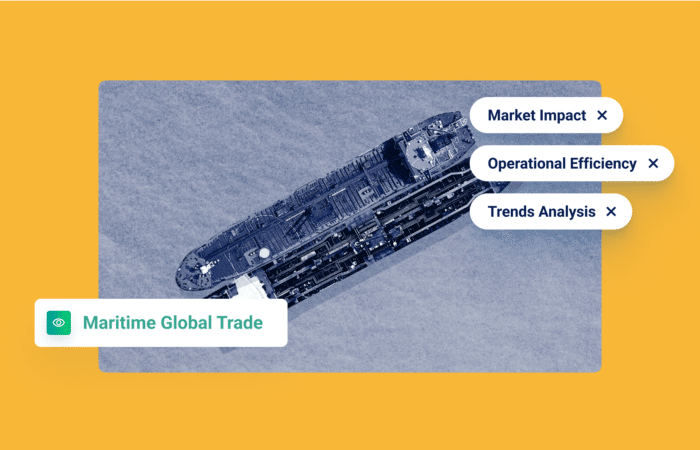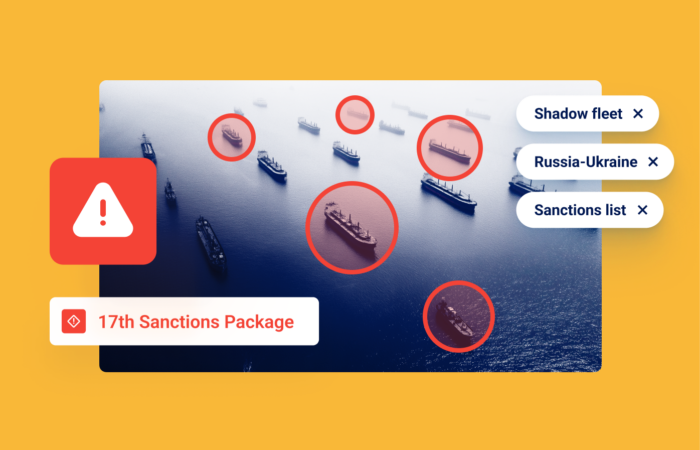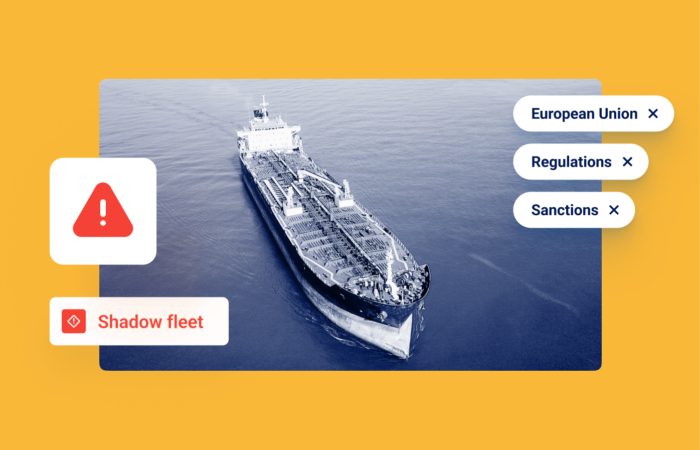Windward’s Insights Featured in UN Report on North Korea

What’s inside?
Windward’s Maritime AI™-powered technology assisted the UN Panel of Experts (UNPoE) and was featured 26 times in the latest report on deceptive shipping practices (DSPs) related to North Korea.
North Korea’s deceptive shipping practices (DSPs) have come under scrutiny by international bodies in recent years due to their potential violation of UN sanctions. The UNPoE’s most recent report (S/2023/656 – published in September 2023) on the Democratic People’s Republic of Korea (DPRK, or North Korea) has identified several DSP trends employed by North Korea to continue its oil and coal trade, potentially bypassing sanctions.
The panel’s main focus regarding the maritime domain is DSPs that are aimed at evading the UN sanctions for importing oil products and weapons/technology to the DPRK, and the exporting of coal from the DPRK.
In this blog, we will delve into three main DSP trends observed in North Korea:
- Ship-to-ship (STS) engagements
- “Dark” STS operations in the DPRK and Chinese exclusive economic zones (EEZs)
- Location (GNSS) manipulations (ID and location tampering)
What are Deceptive Shipping Practices (DSPs)?
DSPs are tactics utilized by bad actors to evade detection, sanctions, and regulations while engaging in illegal operations, such as oil smuggling and illegal trading. These practices can make it difficult to track the movement of cargo, identify the true owners of vessels, and enforce sanctions.
Ship-to-Ship (STS) Engagements
STS engagements, or transfers at sea, are frequently used to evade sanctions by concealing the origin or destination of cargo, and have been a long-standing tactic used by North Korean vessels to transfer goods, particularly oil and coal. UNPoE noted a shift in these operations during the first half of 2023 from North Korean waters to the Chinese exclusive economic zone (EEZ), specifically around Shanghai and the Taiwan Strait. This shift was evident in areas such as Taishan Island, where DPRK vessels delivered exported coal.

To evade detection, North Korean vessels have adopted various evasive practices during STS engagements. These include conducting meetings during low-light conditions (dusk and dawn), reducing the time of operations, using falsified IDs and AIS transmissions.
The most prominent location for intermediary oil transfers in the Chinese EEZ is Sansha Bay, Fujian, China, according to the panel, where vessels often remain stationary and do not transmit their AIS signals, making detection more challenging. Windward’s Maritime AI™ platform detected vessels there showing a “lost signal” in the bay, while satellite images show that the vessels are anchored in the same place they are assumed to be.


“Dark” STS in the DPRK and Chinese EEZs
“Dark” STS operations are a clandestine version of STS engagements where at least one of the vessels involved does not transmit its AIS signal. This adds another layer of deception to the process. North Korean vessels have been observed engaging in such operations, further complicating efforts to monitor their activities.
As for coal exports from the DPRK, the panel noted that the Chinese territorial waters remain one of the most prominent locations for STS operations by DPRK vessels, especially to Lianyungang, China, and Taishan Island. Most oil transfers are conducted under “dark” STS operations or via “dark” port calls in China.

Location (GNSS) Manipulation (ID and Location Tampering)
One of the prominent DSPs in 2023 was the use of location tampering, referred to as “geo-spoofing” in UNPoE’s report. Location tampering is used to obscure the vessels’ actual activities and locations. This technique was employed by several vessels under investigation, including the New Konk (transmitting as Flonline and Lifan’s fraudulent identities) and the Unica (transmitting as the Liton’s fraudulent identity).
In April 2023, the panel highlighted a peculiar sailing pattern for these vessels, which was identified by Windward’s Maritime AI™ platform as location tampering in the Taiwan Strait. While the New Konk appeared to be sailing in the Taiwan Strait, satellite images showed a candidate vessel in the DPRK’s EEZ, potentially engaged in oil transshipment.
In addition to location tampering, North Korean vessels have been known to manipulate their identities, using fraudulent identities that often belong to recently scrapped vessels as part of the oil and coal transshipment to conduct the multi-stage STS operations.
In the September 2023 report, the New Konk was found to transmit as the Lian (MMSI: 667001395), and the Diamond 8 or Nam Dae Bong transmitted as the Shunli (MMSI: 457111000). By adopting these fraudulent identities, the oil transfer network to North Korea can effectively erase the North Korean identity from the process.
Stay Ahead of the Game
The UNPoE’s observations reveal that North Korea continues to employ DSPs to circumvent sanctions and engage in the trade of oil and coal. STS engagements, “Dark” STS operations, and location manipulations are at the forefront of these tactics. Complex, innovative DSPs are being utilized and are difficult to detect. Innovative detection technology is critical for avoiding financial and reputational damage.
With Windward’s patented Maritime AI™ technology, monitoring and countering these practices becomes easy. Organizations can enrich investigations, complete sanctions-compliance evaluations and illicit activities detection in real-time, and in line with market events and trends, stay ahead of bad actors, and minimize risk.











